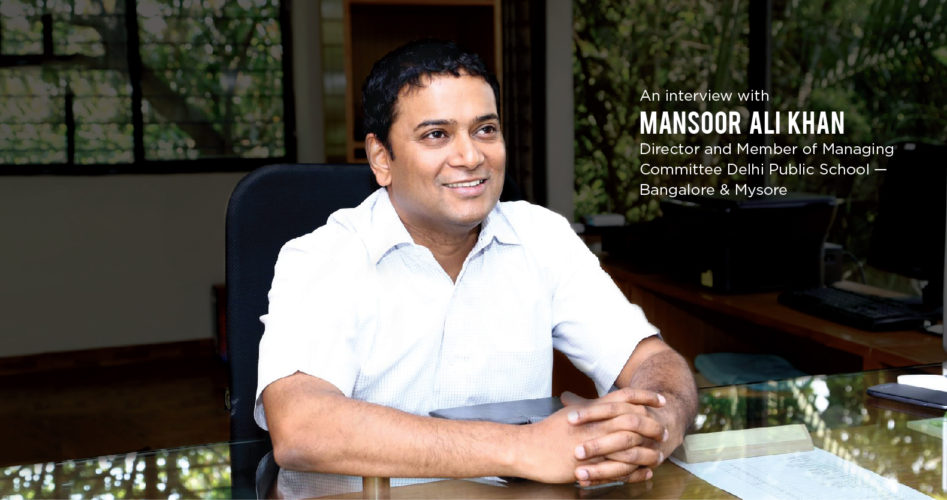Q 1) According to you, which domains have embraced digitalization the most?
Technology has made a remarkable impact across domains. From transportation and tourism to agriculture and defense, its presence is felt everywhere. In the education sector, digitalization has marked the beginning of a new era of online tools that allow for easy management of the school’s human resources (staff, students, and parents).
Q 2) Being in the education industry for several years, what are the shifts that you have noticed?
There have been two primary paradigm shifts in this industry, one of them being an increased focus on skill-based education. We have introduced courses such as IT, retail, and automobile in an effort to move away from traditional knowledge-based learning to a more skill-based approach.
The other major shift I have noticed is the implementation of massive technology infrastructure in the education sector. The STEM to STEAM movement has been taking root over the past few years to meet the needs of the 21st century economy. This learning approach uses Science, Technology, Engineering, Arts, and Mathematics as access points for guiding inquiry, dialogue, and critical thinking. With smart classes, iPads, and tablets making their way to the 21st century classroom, we have come a long way when it comes to dissemination of knowledge.
Today, learning is aided by photos, maps, images, and animated videos that allow students to establish a strong connect with faculty and drive better outcomes.

Q 3) How has technology impacted modern day education?
For one, technology has greatly expanded the access to education. Information in the form of books, audio, images, and videos is now available at one’s fingertips — and it’s all because of the Internet! Platforms such as Khan Academy even allow students to enrol in online courses that are available across the world. For students, the walls of a classroom are no longer a barrier because technology has given them the wings to look beyond through new means of learning, communicating, and working. That’s why we have introduced Skypeathon — a Microsoft platform that connects our students to others around the globe, and Entrar — a school management software that simplifies our internal operations.
Q 4) How has the use of digital platforms helped you communicate and interact with parents?
It cannot be denied that digital marketing comes with many advantages. One among these is the ability to generate greater and higher traffic. After all, targeting the right kind of people that deliver the right kind of results is exactly what digital marketing is about.
We use a host of platforms and channels to streamline our interactions with parents. One such platform is Entrar, which allows parents to stay informed about their child’s progress at school. We use the school website to share the newsletter, information on international programs, and updates on our value-added assessment systems (Olympiads, Cambridge assessments, etc). Our Facebook pages are also always buzzing with school-related updates — from exam news to achievements.
Recently, we introduced a Global Positioning System (GPS), which enables parents to track their kid’s movement from boarding to de-boarding. These technologies have simplified and improved our interactions with parents, thereby enhancing our interpersonal relationships with them.
This type of marketing approach has previously helped School of India find its very own niche amidst other leading schools in the country.

Q 5) How has digitalization helped you connect with candidates?
Many media platforms, such as LinkedIn, Facebook, and Twitter, allow us to connect easily with candidates, many of whom would otherwise not be reachable through traditional channels. Digitalization has also helped us mentor our students on these very platforms, which can be used by them to build professional careers and learn the basics of social media etiquette.
Q 6) How can integrated marketing help brands ensure better conversion rates?
Marketers in today’s day and age have plenty of choices when it comes to promoting and advertising their products and services. From print and web-based advertising to direct and mobile marketing, brands now have endless ways through which they can connect with their target audience. While there is no sure-fire formula to creating a successful integrated marketing campaign, there are a few steps that a brand can take to maximize its conversion rates. Linda Pophal, Marketing Communication Consultant, Strategic Communications, has rightly said, “It’s important to clearly identify [who your target audience is by] both demographic and psychographic (attitudes, interests and behaviors), to help develop key messages and identify the best communication channels to reach them.”
Q 7) How do DPS Bangalore and School of India carry forward the vision of Digital India?
It is important to remember that the world around us is changing, and so are our children. But to prepare them for this ever-evolving world, we must change the way we educate them too. In the 21st century, educators must create a curriculum that helps students connect with the world and understand the problems we face.
This becomes even more relevant with the coming of the Digital India initiative. We ensure our students are digitally connected to their curriculum by providing online information about exams, assignments, and holidays. We have also taken the Digital India vision forward forward by providing:
- Digital infrastructure
- Governance and on-service demand
- Digital empowerment
Q 8) You have journeyed from a brand advocate to a brand champion. Tell us more about this.
Brand advocacy is more than just a policy — it’s a philosophy that reflects across businesses. When people love your brand, they won’t hesitate to pass the word, helping drive revenue and business intelligence, and scale in ways that advertising and traditional marketing simply cannot. And when these very people spread the word and act as influencers, they go from being brand advocates to brand champions.
At our schools, we encourage teachers to be our ambassadors. They are the ones who ultimately uphold the principles of education and know the culture of our school through and through. After all, we grow with our students, teachers, and parents — not just in infrastructure, but in faith and commitment as well.

